1813 Holey Dollar struck from a Ferdinand VII 1810, Mexico Mint, Spanish Silver Dollar.
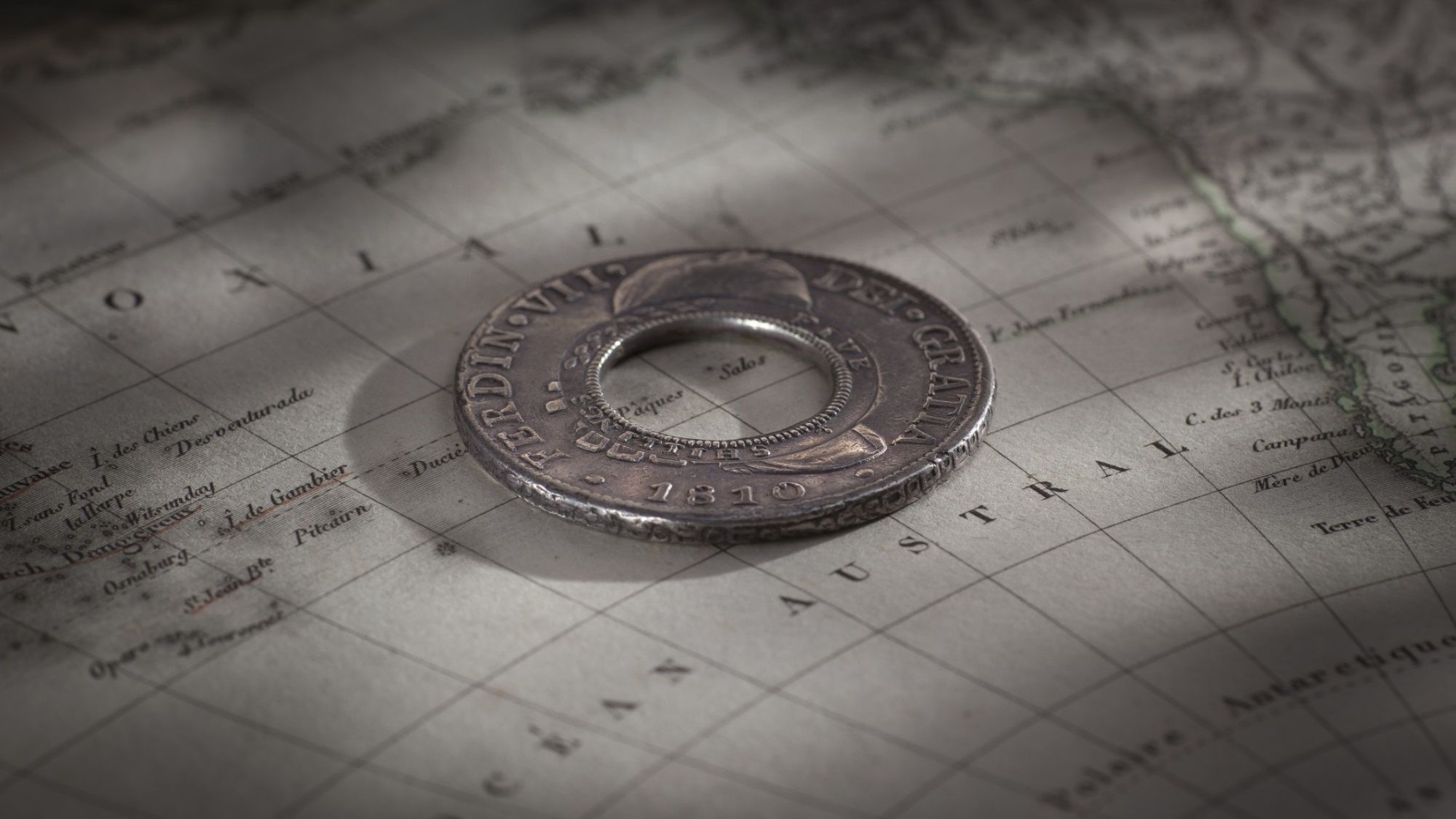
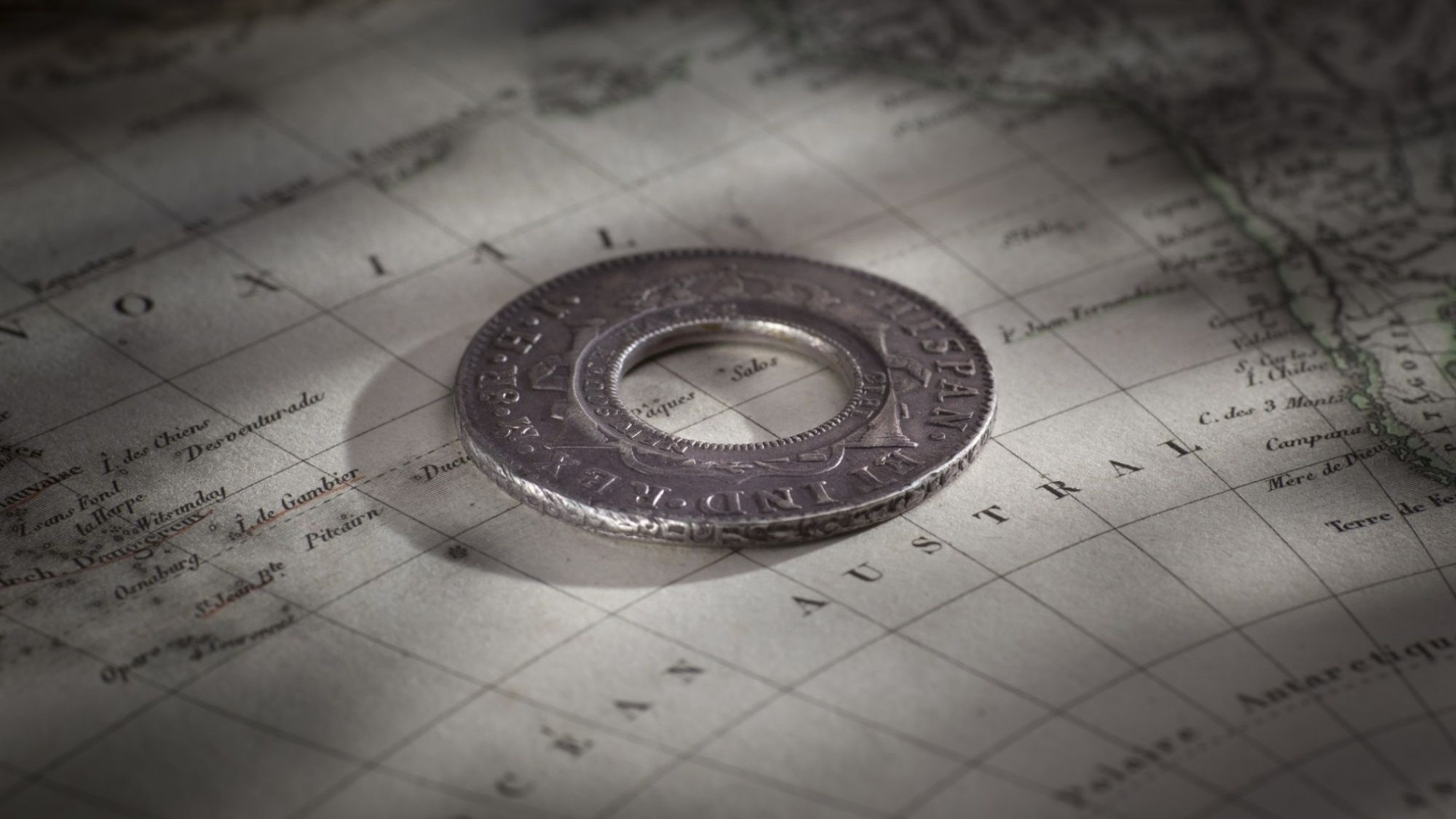
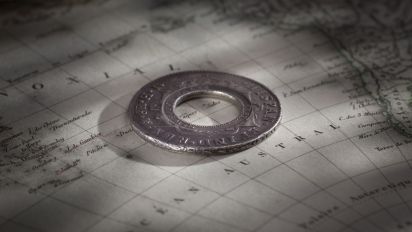
The fundamentals of this Holey Dollar.
When William Henshall created this Holey Dollar, he grabbed a Spanish Silver Dollar that had been struck at the Mexico Mint in the year 1810 and that depicted the legend and portrait of King Ferdinand VII of Spain.
Using crude equipment, he cut a hole in it.
Henshall then continued the minting process by over-stamping the inner circular edge of the hole with the words New South Wales, the date 1813 and the value of five shillings.
That’s the point at which the holed silver dollar became the 1813 New South Wales Five Shillings, better known as the 1813 Holey Dollar.
The photographs clearly show that this coin is well struck, a point worth noting as most Ferdinand Holey Dollars have an inherent weakness in their striking.
Visually this coin is stunning and of the twelve privately held Ferdinand Holey Dollars we rate this coin as being in the top three for quality and eye appeal.
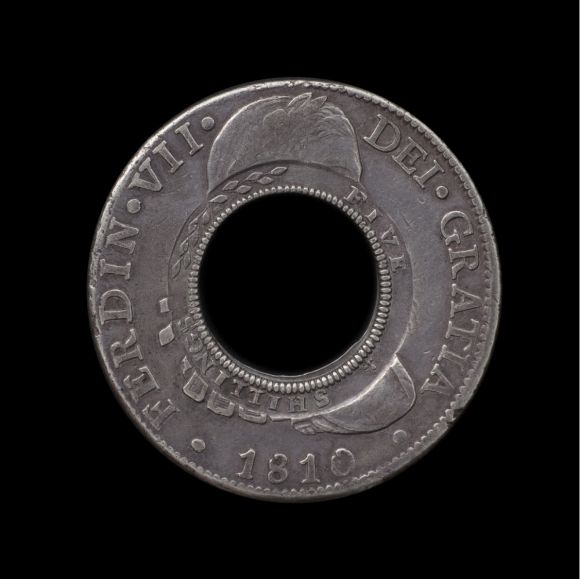
A well struck Ferdinand Holey Dollar, struck on a silver dollar minted in 1810.
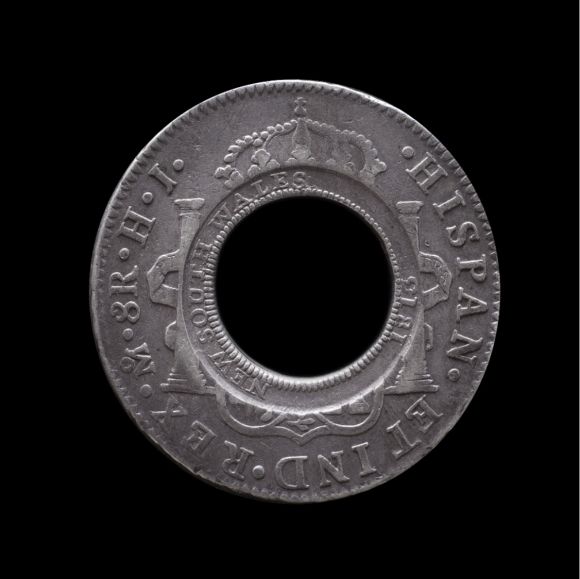
The original coin and the counter stamps are superb for quality.
Ferdinand Holey Dollars. The rarest of the rare.
Governor Lachlan Macquarie’s order for 40,000 Spanish Silver Dollars was not date specific. Any date would do. Any monarch would suffice. King Charles III, Charles IIII, Ferdinand VI or Ferdinand VII.
Nor did he care where the coin was minted. Mexico. Peru. Bolivia. Or Spain. And quality was inconsequential.
All that mattered was that it was a Spanish Silver Dollar.
And it is the interplay of these attributes, quality, mint, monarch and date that define a Holey Dollar and leads us to say that while all Holey Dollars are rare, some are far rarer than others.
A major study completed in 1988 by Messrs. Mira and Noble identified a total of 176 privately owned Holey Dollars.
And confirmed the relative frequency of the four monarchs within that total. Their results are summarised below.
- Ferdinand VI reigned from 1746 to 1759 and appears on only one Holey Dollar. Dated 1757, (56 years before Henshall got his hands on it) there are no other known Ferdinand VI examples either in museums or privately owned worldwide.
- Charles III reigned from 1759 to 1788. His portrait appears on 32 Holey Dollars.
- Charles IIII reigned from 1788 to 1808. His portrait appears on 130 Holey Dollars. The Spanish Empire was at its zenith during the reign of Charles IIII, the silver rich continent of South America bankrolling Spain's ascendancy as a world power by way of massive silver coin production.
- Ferdinand VII reigned in 1808 for less than two months. And again in 1814. His portrait appears on only 12 Holey Dollars.
And if you are doing the math on the numbers quoted above, yes it does total 175.
And the missing coin? The Hannibal Head Holey Dollar featuring the imaginary portrait of the Spanish monarch, sold by Coinworks in August 2018 for $500,000.
Given that the Mira Noble data was compiled in 1988, it stands to reason that several examples must have been discovered over the past 30 years.
And that is indeed the case.
According to our research, the list of 176 privately owned Holey Dollars can now be updated to 192, with the addition of 16 recently discovered examples.
The monarch's portrait - and date - depicted on the newly discovered Holey dollars is summarised below.
- Charles III – two Holey Dollars have emerged with the portrait of Charles III. One is dated 1789 and struck at the Lima Mint. The second is dated 1790 and struck at the Mexico Mint. Given that Charles III died in 1788, these two Holey Dollars are seriously important.
- Charles IIII – fourteen Holey Dollars have emerged dated 1791, 1792, 1793, 1794 (2), 1798 (2), 1799, 1800, 1805 (2), 1806 (2) and 1808. Of those only one relates to the Potosi Mint, four to Lima and the balance were produced at the Mexico Mint.
But the important point to come out of this statement is that NO Ferdinand VII Holey Dollars have surfaced since 1988.
Re-affirming their inordinate rarity.
Ferdinand Holey Dollars. 'Politics 101' played out in the 19th century.
Napoleon Bonaparte emerged as the strongman of Europe in 1799 leading his armies across Europe deposing monarchs and dominating the entire continent. At the time Spain was ruled by the Bourbon monarch, King Charles IIII and was an ally of France.
In 1807, Bonaparte’s armies marched through Spain and invaded Portugal.
The alliance between France under Bonaparte and Spain under Charles IV disintegrated the following year when on February 16, 1808, under the pretext of sending reinforcements to the French army occupying Portugal, the French invaded northern Spain.
King Charles IIII was pressured into abdicating the Spanish throne in March 1808 to his son Ferdinand VII.
The latter reigned for less than two months.
Both Charles IIII and Ferdinand VII were duped by Napoleon Bonaparte into ceding the Spanish throne to Bonaparte’s older brother Joseph who assumed rule of the Spanish kingdom on 6 June 1808.
And while the upper echelons of the Spanish Government accepted Ferdinand's abdication and Napoleon's choice of Joseph as King of Spain, the Spanish people did not. Uprisings broke out throughout the country.
The Spanish colonial mints refused to acknowledge Bonaparte as the Spanish King and protested by continuing to strike their silver dollars with the legend and portrait of the exiled Ferdinand VII.
It’s politics 101. Played out in the nineteenth century.
By 1813 the French position in Spain became untenable and Napoleon withdrew his troops and released Ferdinand VII from Valencay (France), where he had been imprisoned.
Ferdinand VII returned triumphantly to Madrid and re-claimed the Spanish crown early in 1814.
© Copyright: Coinworks